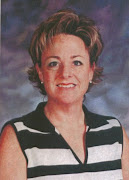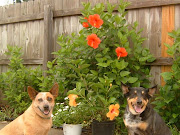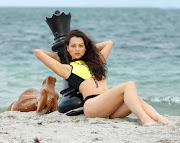1. Babe Didrickson Zaharias
2. Ben Hogan (born in Stephenville; grew up in Fort Worth, 5'7" 140 lbs!)
3. Sam Baugh
4. Michael Johnson
I think the Texas Rushmore figures should be born in Texas. Otherwise, Mia Hamm, Carl Lewis, Ty Murray, and Hakeem Olajuwon would deserve strong consideration.




Babe Didrickson Zaharias was born in Port Arthur and grew up in Beaumont.
She was a feminist pioneer, insofar as she disdained gender conventions of the day, and her athleticism was shocking to an American society which valued a certain image of women. Byron Nelson said he knew of only eight men who could outdrive her. Grantland Rice:
She is beyond all belief until you see her perform...Then you finally understand that you are looking at the most flawless section of muscle harmony, of complete mental and physical coordination, the world of sport has ever seen.Wikipedia:
She won the sewing championship at the 1931 State Fair of Texas in Dallas. In 1929, Didrikson graduated from Beaumont High School but did not attend college. She was a singer and a harmonica player. She recorded several songs on the Mercury Records label. Her biggest seller was "I Felt a Little Teardrop" with "Detour" on the flip side.
[...]
Didrikson gained world fame in track and field and All-American status in basketball. She played organized baseball and softball and was an expert diver, roller-skater and bowler. She won two gold medals and one silver medal for track and field in the 1932 Los Angeles Olympics.
AAU champion
Despite leading the team to an AAU Basketball Championship in 1931, Didrikson first achieved wider attention as a track and field athlete.
Representing her company in the 1932 AAU Championships, she competed in eight out of ten events, winning five outright, and tying for first for a sixth. In the process, she set five world records in the javelin throw, 80-meter hurdles, high jump and baseball throw. in a single afternoon. Didrikson's performances were enough to win the team championship, despite her being the only member of her team.
1932 Olympics
Since the AAU Championships were the de facto US Olympic Trials, Didrikson qualified for the 1932 Summer Olympics in Los Angeles. By the rules then in effect, as a female athlete, she was limited to entering up to three events, and she chose the javelin throw, the 80 meter hurdles and the high jump. She nearly won all three events: she won gold medals in the javelin (143 feet, 4 inches) and hurdles (11.7 seconds). She cleared the same height (5foot 5inches) as her teammate Jean Shiley in the high jump (with whom she had tied in the AAU Championship). The judges, however, disapproved of her jumping style (jumping over headfirst) in the final tie breaker jump, and they declared Shiley the Olympic champion. After the Games, Shiley and Didrikson split their two medals - the gold one and the silver one.

 Sam Baugh was born in Temple, attended Sweetwater High School, and chose TCU because coach Dutch Meyer promised he could play football and basketball and baseball. Wikipedia:
Sam Baugh was born in Temple, attended Sweetwater High School, and chose TCU because coach Dutch Meyer promised he could play football and basketball and baseball. Wikipedia: Baugh was also a baseball player at Texas Christian, where he played third base. It was during his time as a baseball player that he earned the nickname "Slingin' Sammy", which he got from a Texas sportswriter. After college, Sammy signed a contract with the St. Louis Cardinals and was sent to the minor leagues in Columbus, Ohio after being converted to shortstop. He was then sent to an even lower league in Rochester, New York. While there he received little playing time behind starting shortstop Marty Marion and was unhappy with his prospects, so he then turned to professional football.Sports Illustrated named Baugh the best QB of College Football's first 100 years. Baugh was renowned for his accuracy as a passer. When a Redskins coach encouraged Baugh to "hit him (a receiver) in the eye", Baugh famously quipped: "Which eye?" In the NFL, at one point Baugh was simultaneously the best in the league as a QB, Punter, and Safety.
Edited part in purple:
Who is the best Texas baseball player of all time? I think Rogers Hornsby. He was born in Winters, grew up in Fort Worth, was a
Ted Williams in his autobiography, "My Turn at Bat" (at page 118), stated that Hornsby was the greatest hitter for average and power in the history of baseball.
Tris Speaker, with his lifetime .345 average and his career in CF, is a strong candidate.

 `
``
`
`
`
`
`
`
`
`
`
`
`
`
`
"(Ty) Cobb would have to play center field on my all time team. But where would that put (Tris) Speaker? In left. If I had them both, I would certainly play them that way." - Hall of Fame Manager John McGrawWikipedia:
"Although I guess the best center fielder of them all was Tris Speaker. He played in real close and could go back and get those balls better than anyone I ever saw." - Hall of Fame member Sam Crawford, Detroit Tigers.
Tris Speaker was born on Wednesday, April 4, 1988 in Hubbard, Texas, to Archie and Nancy Poer Speaker. As a youth he suffered a broken right arm in a fall from a horse, and was forced to throw with his left hand. Eventually he became so comfortable with his left hand that he continued to throw southpaw after his right arm healed. In 1905 Speaker played his only year of college baseball, for Fort Worth Polytechnic Institute. His left arm was subsequently injured a football accident, to the extent that surgeons advised amputation. Tris refused, and recovered to become one of baseball's great hitters and outfielders, as well as manager of a World Championship team, and the seventh member of the Baseball Hall of Fame.Nolan Ryan is a strong candidate.
After Sammy Baugh, who in football? Earl Campbell. LaDanian Tomlinson. Eric Dickerson. Doak Walker and Bobby Layne. Bob Lilly. Mean Joe Greene. Elvin Bethea. Clyde "Bulldog" Turner. Ki Aldrich. Mike Singletary. Forrest Gregg. Gene Upshaw. Dick "Night Train" Lane, born in Austin and died in Austin, named best CB of pro football's first fifty years, remains arguably the best CB of all time. Ken Houston. Darrell Green. Charley Taylor. Otis Taylor. Raymond Berry.

Davey O'Brien, a cross between Doug Flutie and Darren Sproles, in 1938 won the Heisman Trophy and led TCU to the National Championship. TCU uniform pants were yellowish khaki - the color of muddy winter grass. Delicious uniforms.
Ken Hall had the finest high school career of any RB. I leave off the players who went to college out of state(and were not forced out due to race): Billy Sims, Adrian Peterson, Gregg Pruitt.
The city of Houston dominates basketball. Elvin Hayes. Cynthia Cooper. Clyde Drexler. Sheryl Swoopes. Slater Martin.
Lance Armstrong
Don Gay
A.J. Foyt
Gordon Wood, Robert Hughes, Harvey Pennick, Tom Landry, Bum Phillips, Cliff Gustafson, Dutch Meyer (first coach to use the spread offense). Sam Baugh:
“Dutch Meyer taught us. All the coaches I had in the pros, I didn’t learn a damn thing from any of `em compared with what Dutch Meyer taught me."








No comments:
Post a Comment